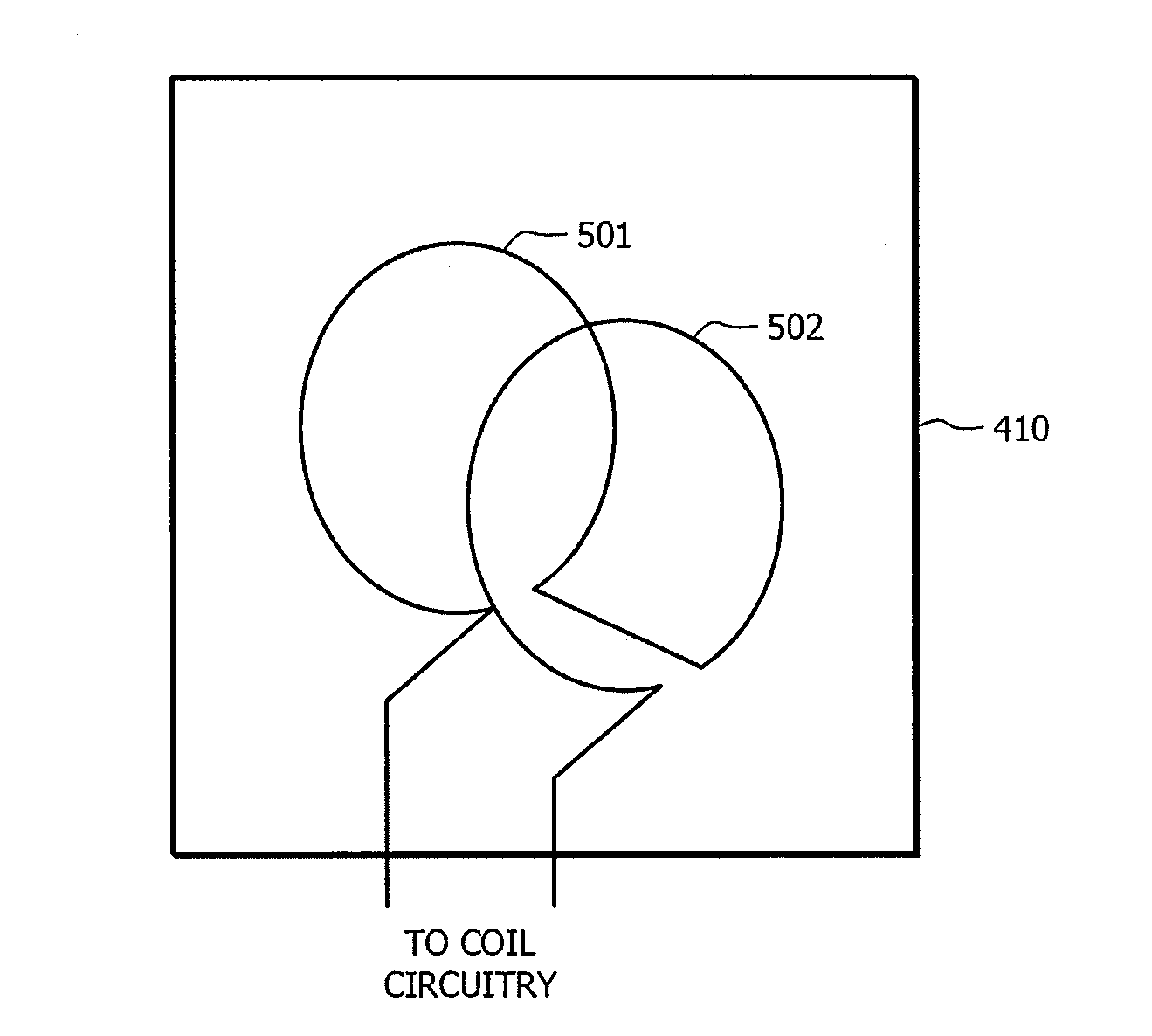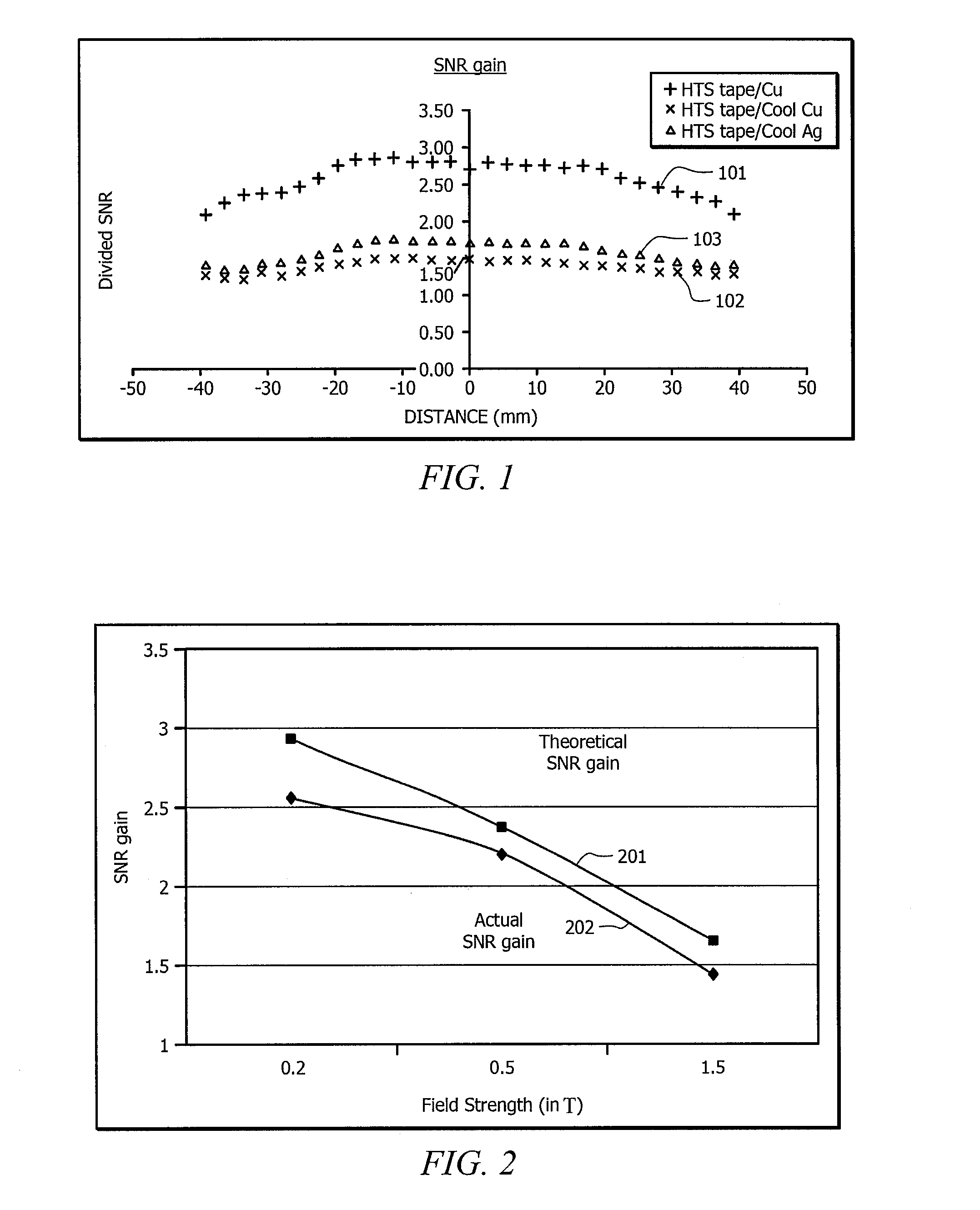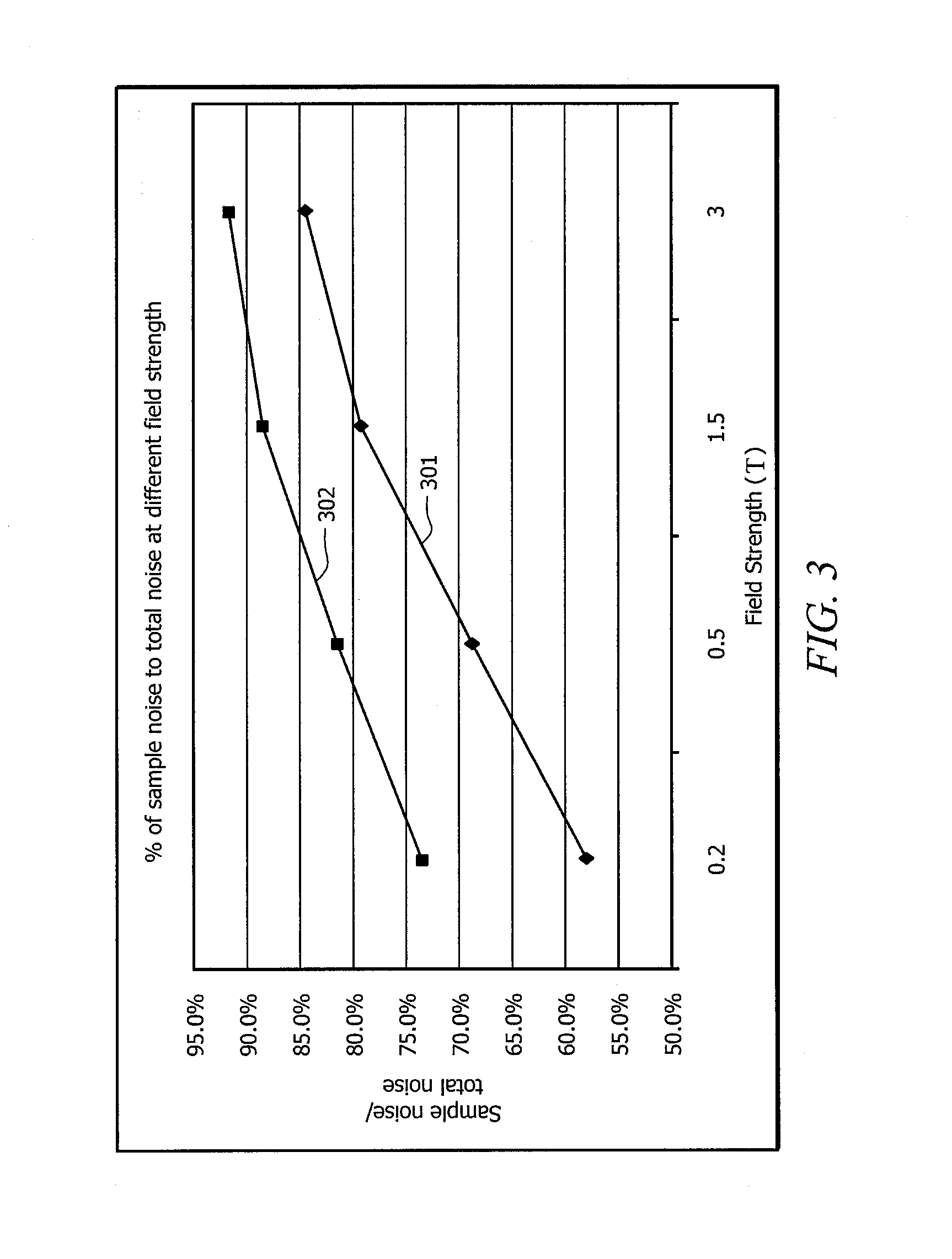High temperature superconductor receiver coil magnetic resonance imaging systems and methods compatible with an infant incubator
a superconductor and receiver coil technology, applied in the field of magnetic resonance imaging, can solve the problems of severe developmental problems, inability to fully realize the full potential inability to meet the needs of the infant incubator,
- Summary
- Abstract
- Description
- Claims
- Application Information
AI Technical Summary
Benefits of technology
Problems solved by technology
Method used
Image
Examples
Embodiment Construction
[0021]In order to aid in understanding the concepts of the present invention, underlying considerations which led the present inventors to embodiments herein are discussed below. Embodiments of the invention are described following the discussion of these underlying considerations.
[0022]A higher signal-to-noise ratio (SNR) is desirable to improve image quality and / or to reduce data acquisition time. The SNR associated with operation of a MRI system for collecting image data may be expressed as follows:
SNR αB0 / sq. root (RcTc+RsTs) (1)
where Rc is the electrical resistance of the RF receiver coil, Tc is the temperature of the RF receiver coil, Rs is the resistance of the imaging sample, and Ts is the temperature of the imaging sample. Sample noise (RsTs) is Johnson noise which increases with sample temperature (Ts) and the magnetic field strength of the MRI scanner (B0) (e.g., 0.5 T, 1.5 T, 3 T). As can be appreciated from equation (1), the SNR of the MRI system improves with the low...
PUM
 Login to View More
Login to View More Abstract
Description
Claims
Application Information
 Login to View More
Login to View More - R&D
- Intellectual Property
- Life Sciences
- Materials
- Tech Scout
- Unparalleled Data Quality
- Higher Quality Content
- 60% Fewer Hallucinations
Browse by: Latest US Patents, China's latest patents, Technical Efficacy Thesaurus, Application Domain, Technology Topic, Popular Technical Reports.
© 2025 PatSnap. All rights reserved.Legal|Privacy policy|Modern Slavery Act Transparency Statement|Sitemap|About US| Contact US: help@patsnap.com



